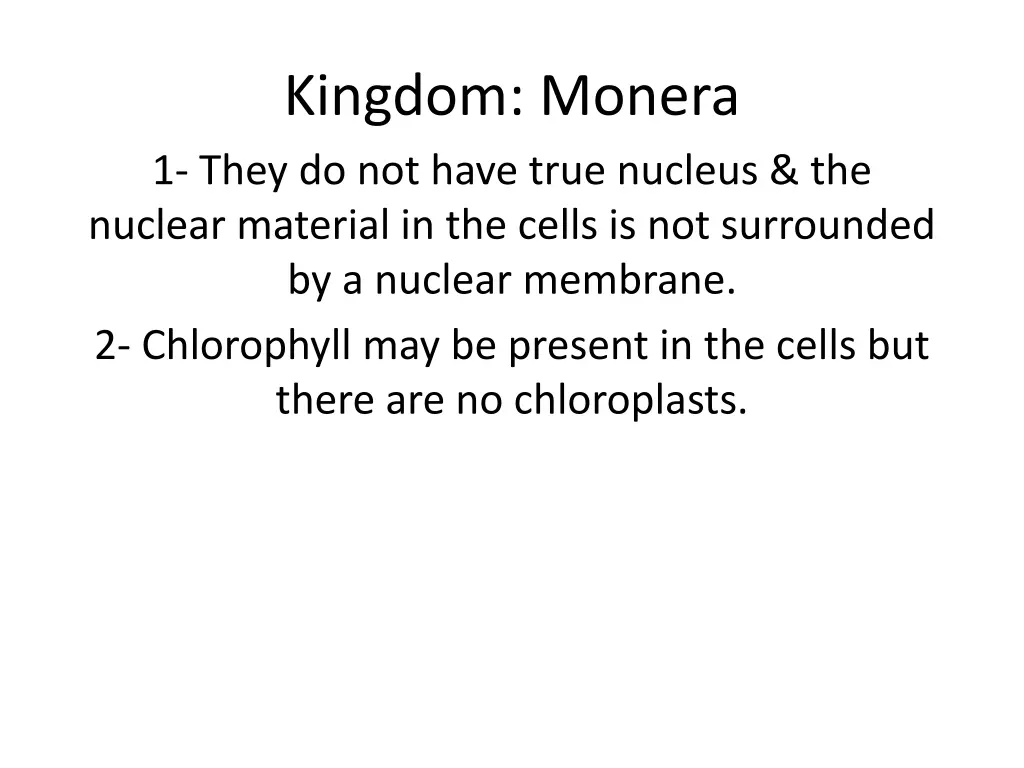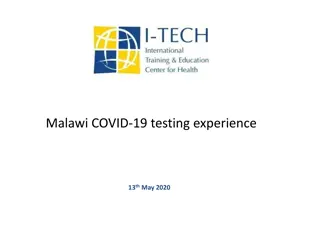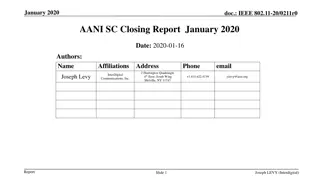
Monera and Protista: A Comparison of Microbial Kingdoms
Explore the characteristics of Monera and Protista kingdoms, including details on Monera's absence of true nucleus and presence of chlorophyll, and Protista's unicellularity and true nucleus. Learn about specific phyla and examples within each kingdom, from bacteria shapes to Euglena's chloroplasts.
Download Presentation

Please find below an Image/Link to download the presentation.
The content on the website is provided AS IS for your information and personal use only. It may not be sold, licensed, or shared on other websites without obtaining consent from the author. If you encounter any issues during the download, it is possible that the publisher has removed the file from their server.
You are allowed to download the files provided on this website for personal or commercial use, subject to the condition that they are used lawfully. All files are the property of their respective owners.
The content on the website is provided AS IS for your information and personal use only. It may not be sold, licensed, or shared on other websites without obtaining consent from the author.
E N D
Presentation Transcript
Kingdom: Monera 1- They do not have true nucleus & the nuclear material in the cells is not surrounded by a nuclear membrane. 2- Chlorophyll may be present in the cells but there are no chloroplasts.
The Monera kingdom is divided into two phylum A- Blue- Green Algae.(e.x: Nostoc , Oscillatoria )
B- Bacteria.( Bacteria ) One- celled, most of them have no chlorophyll, it has three basic shapes (Coccus, Spherical and Bacillus) Bacteria that have chlorophyll can make their food by (photosynthesis) but other bacteria did not have chlorophyll so they obtain food by growth on living thing & called Parasites or by dead organic and called Saprophytes.
2- Kingdom: Protista 1- Most of the protista are unicellular . 2- They have a true nucleus. (Eukaryotic) .
The phylum of Protista Kingdom: 1- 2- 3- 4- 5- 6- 7- 8- Euglenophyta Euglena Chrysophyta (golden algae) Diatoms Pyrophyta Ceratium Sarcodina Amoeba Ciliophora (Ciliates) Paramecium Mastoigophora Trichomonas , Trypansoma Sporozoa Plasmodium Myxomycota (Slime Molds) Physarum
Some examples about Protista: Euglena: 1- Are unicellular, live in water 2- Euglena have tail called a flagellum 3 Euglena has chloroplast and can make its own food.
Paramecium: 1- Paramecium is a Sporozoa with two nucleuses, large nucleus controls cell activities and small nucleus is involved in reproduction. 2- Ciliated do not have cell wall, but they have cell membrane.



















